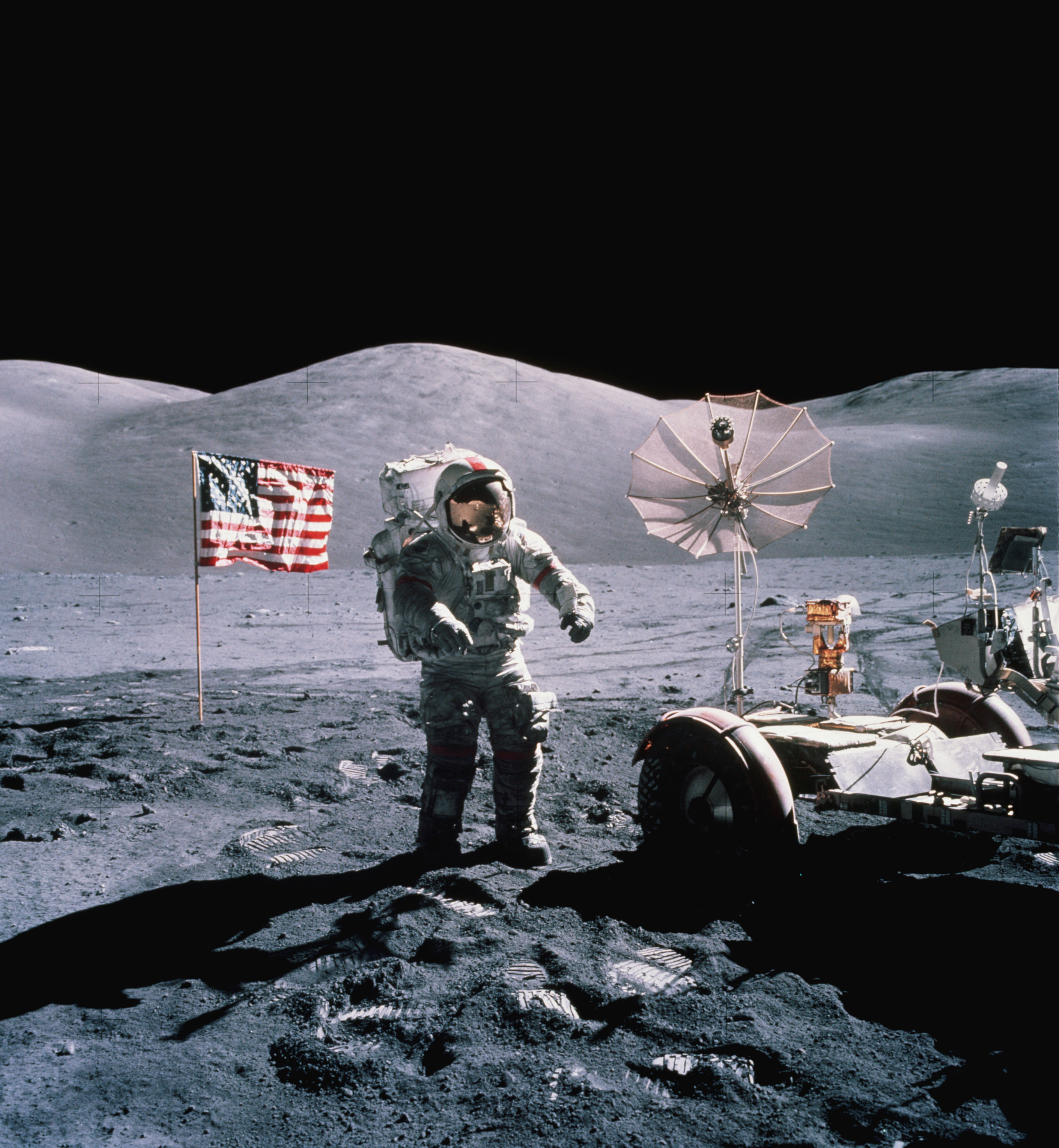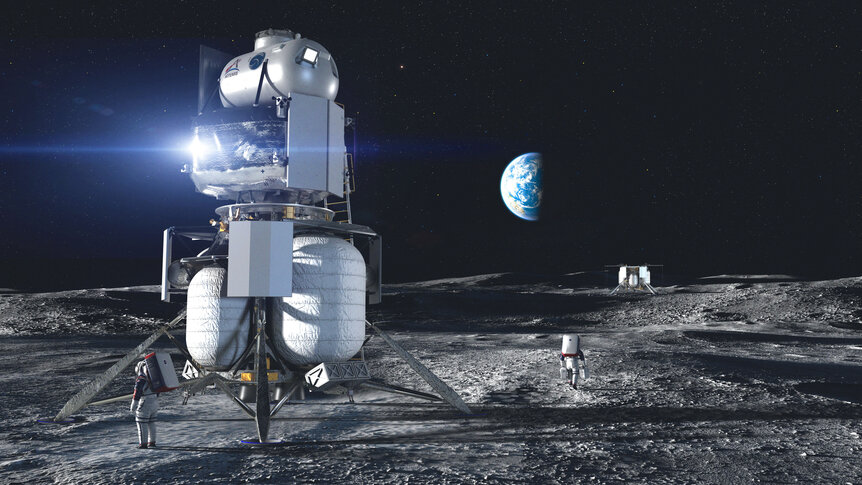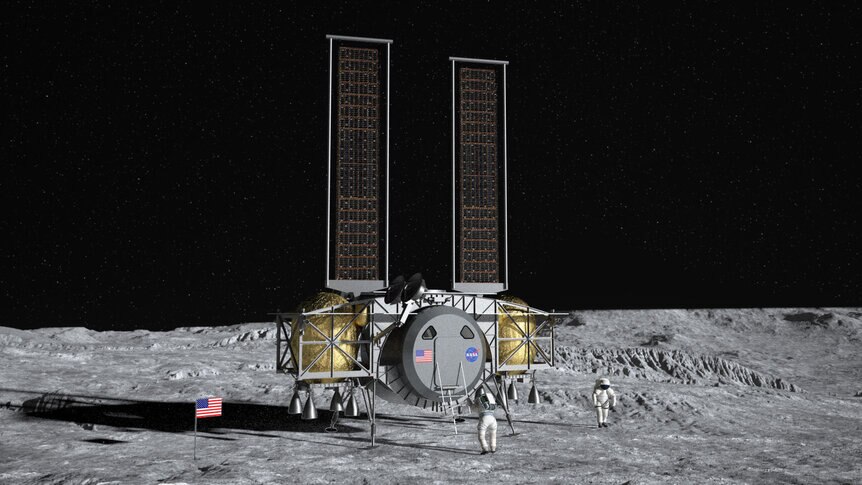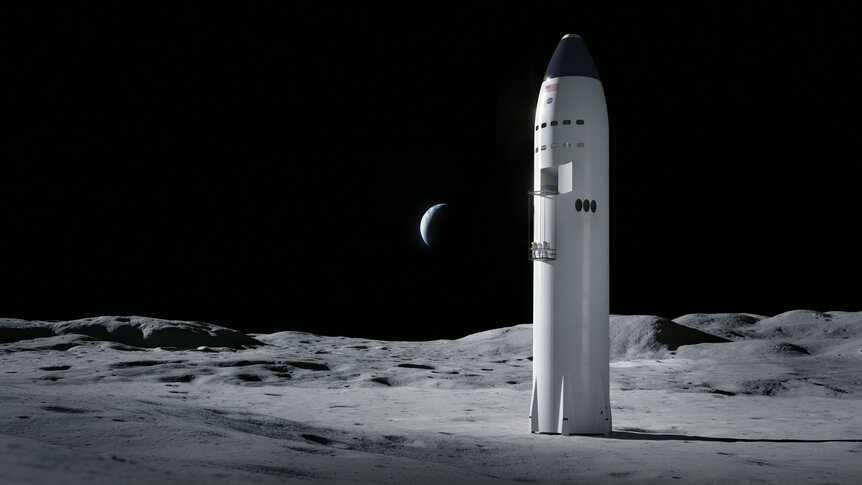Create a free profile to get unlimited access to exclusive videos, sweepstakes, and more!
NASA teases three distinctly different lunar lander designs for Artemis moon mission

NASA has narrowed down a choice for its forthcoming Artemis lunar landing module to three proposed designs from a trio of U.S. companies, and whichever one alights on the moon’s surface first, it’s safe to say it’ll look distinctly different from the two that stayed behind on Earth.
After more than a year of planning, the space agency announced this week that it’ll spend nearly $1 billion to help fund development of three landing modules from SpaceX, Blue Origin, and Dynetics, giving each company a 10-month development timeline to engineer a real-life prototype of their proposed designs. All three will build functioning modules ahead of NASA’s targeted 2024 moon mission, with the agency selecting one to do the honors of carrying the first woman to the lunar surface.
NASA Administrator Jim Bridenstine tweeted out a nifty side-by-side look at the three designs, while the agency served up a slightly more detailed overview of the proposals in a short video:
Blue Origin Integrated Lander Vehicle (ILV)
Washington-based Blue Origin has proposed a design called the Integrated Lander Vehicle (ILV), a three-stage lander powered by BE-7 cryogenic engines, with a crew cabin that shares a ”significant commonality with Orion,” NASA’s planned deep-space exploration vehicle, according to the agency. Blue Origin’s design would also allow the ILV to dock with either Orion or Gateway (NASA’s in-development support craft intended to remain in continuous orbit), and the whole package is being engineered by a consortium of companies that includes Lockheed Martin, Northrop Grumman, and Draper.
Dynetics Human Landing System (DHLS)
Dynetics conceives a modular lander that puts the crew cabin down low, with Apollo 11-style ladder access directly to the lunar surface. The cabin is flanked on either side by fuel modules intended to power the engines “at different points in the mission,” according to NASA. Like the other designs, the Huntsville, Alabama-based company’s lander would be capable of docking with both Gateway and Orion, and would rely on a single engine system for trips both to and away from the lunar surface. It’s meant to be versatile, as well: “The Dynetics Human Landing System is rocket-agnostic, capable of launching on a number of commercial rockets,” explains NASA.
SpaceX Starship
The reusable SpaceX Starship proposal is likely the most familiar-looking of the three, with the lunar iteration just one among many possible configurations for the craft, which the company also aims to adapt for future missions to Mars. Starship’s sleek, vertical design resembles a conventional rocket, and would set itself down, base-first, on the moon’s surface while affording astronauts access to ground level via an elevator that descends from the cabin near the vessel’s nose. The entire craft would be capable of a direct trip from Earth to the moon’s surface, powered by the reusable SpaceX Super Heavy rocket booster.
NASA isn’t just turning its moon landing logistics over to the private sector wholesale; rather, teams from the agency “will be embedded with the companies to help streamline the review of required deliverables to NASA and to impart expertise that the agency has acquired over the last 60 years of human spaceflight systems development,” the agency said in its announcement. The idea for getting Artemis up and running with these vessels is to begin in 2024 with exploratory “demonstration” missions, before progressing toward “a regular cadence of missions” by refining development of the ongoing public-private collaboration as 2030 nears.
(via NASA)





























